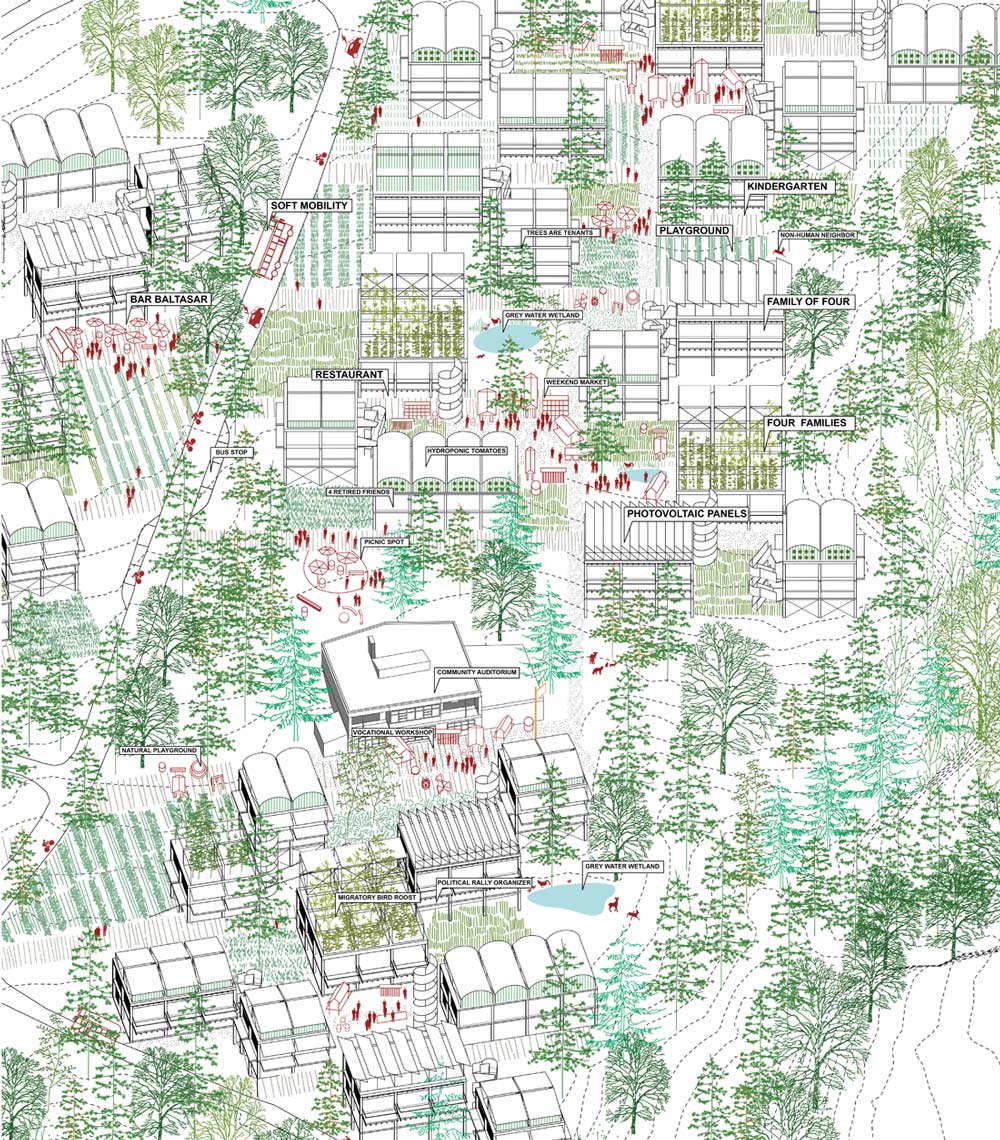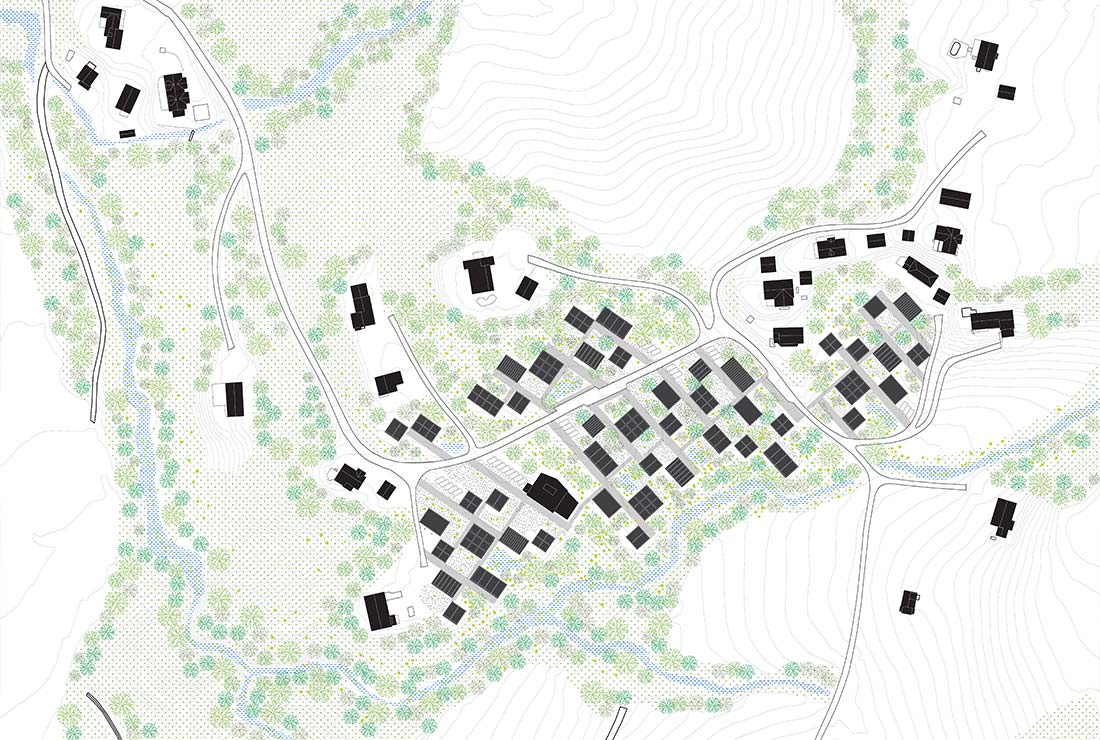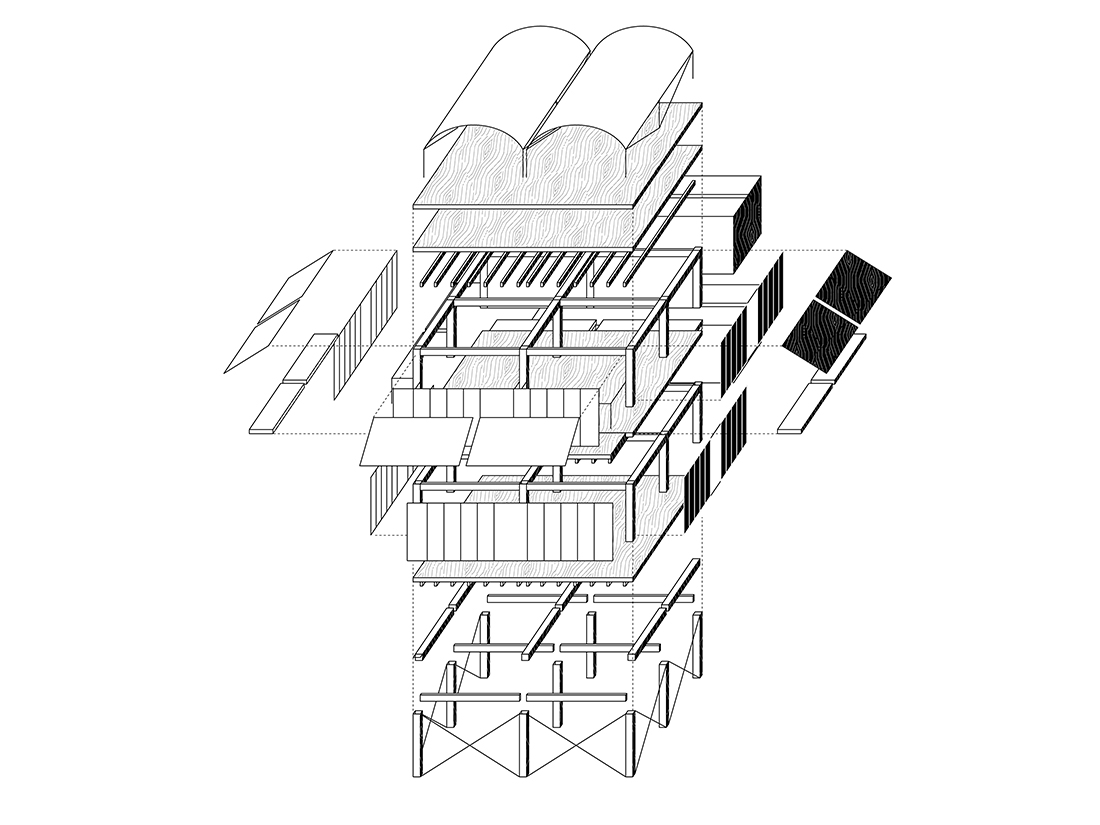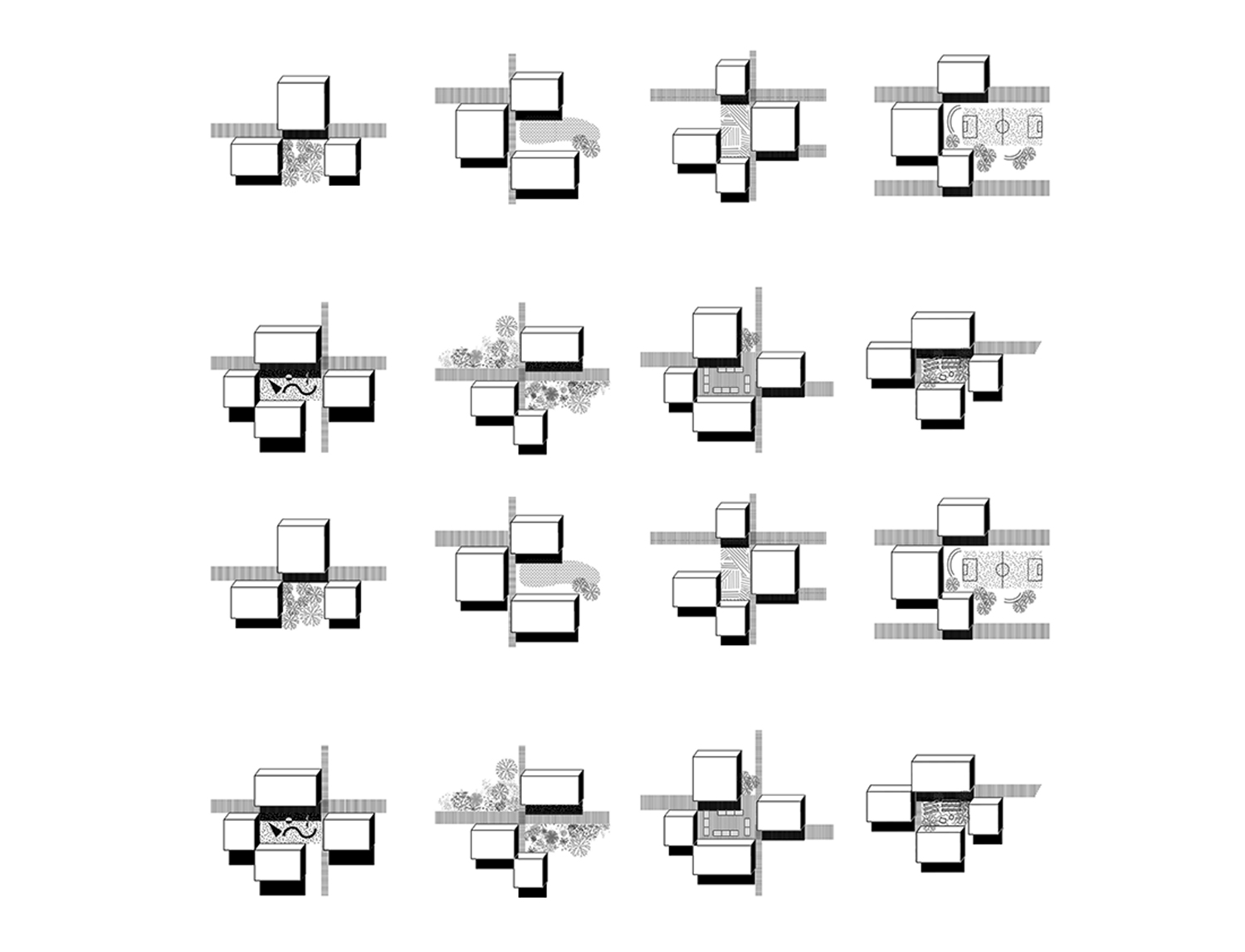https://urbannext.net/grounds-for-coexistence-a-different-format-of-living/
| Grounds for Coexistence: A Different Format of Living https://urbannext.net/grounds-for-coexistence-a-different-format-of-living/ |

Categories: Contributors, Densities, Essay, Formats, Javi Soto, Middle Density, OFMAKE, salazarxsequeroxmedina, Technology and fabrication, Territory and mobility, Topics
A high-speed train approaches Honefoss. The magnetic pull of the big city, Oslo, defines hierarchies and expands, pushing inhabitants to new perimeters, forming an ever larger radius of influence. The inhabitants of Hjertelia will be a mixture of those city people who found freedom during the pandemic through online work, those who are tired of fighting real estate prices, and those – wherever they started – who seek a slightly different format for living. All of them arrive at Hjertelia convinced by the impulse to coexist with nature and each other.

The border condition at the site – not truly a city, not fully the countryside – provokes a different approach to density. A productive farmland landscape should not be subsumed to standalone houses surrounded by lawns or housing blocks of intense anonymity. Imagine the farmland could rise by six meters, and under this elevated ground, life could flourish. Our approach is to stack the traditional models of farmland, domestic space, and work, one over the other to foment contemporary synergies between them. We neutralize the footprint of the house by sandwiching it between two productive grounds.
Density creates opportunities for metabolic cycles to link a richer, more heterogeneous mix of activity. Clusters of three or four stacked units activate the space in between as the key site for interaction and exchange among inhabitants. The social tableau of the in-between encourages a model of cohabitation, where density forms human space but remains permeable to non-human inhabitants. Against the existing diagram of the residual forest, we strive for a vision of the forest like threads through a tapestry.
To de-center the human is to adopt a framework of inclusivity in which the human is one species among others. The fundamental idea of cohabitation is to acknowledge the larger ecosystems beyond the Anthropocene. From trout to birds, foxes, humans and deer, the interstice between dwelling clusters becomes a strongly interwoven ecotone inhabited by those species. Grounds for Coexistence maps the degrees of movement and filtration between ecosystems and makes use of these natural networks to create dwelling spaces that are inclusive to all. The contact of the architecture with the ground defines degrees of permeability, whether elevated paths, light timber structures on piles, or a softscape. As a general rule, all anthropocentric environments benefit from ecological services, but this project explicitly recognizes the value of ecosystems in creating better environments for people and aims to provide a symbiotic habitat for all species in return. For example, systems such as grey water recycling can be adapted to become wetlands in which reed plants help with the filtration process, in turn creating a habitat for local species such as frogs, badgers, and ducks. The filtered water is then reused for the irrigation of permaculture gardens, small crops, or hydroponic systems to become fully integrated metabolic cycles. The aim is to understand every intervention and activity as a neuron within a network that must provide positive feedback into the ecosystem. We strongly believe this framework for thinking is the frontier in the discourse of sustainable urbanism and building. This is the next step to inclusive, participatory urbanism; we should take it now!
Within the greater fabric of Honefoss featuring centralized networks of standalone houses and decentralized networks of housing blocks, Hjertelia offers a distributed network of dwelling clusters. As the region prepares for the future, the project is able to adapt itself to three scenarios: point interventions (A), extensive growth (B), and contraction (C). These scenarios could be divergent or linear, but Hjertelia functions as a prototype that can adapt itself to more or less growth.
While a dwelling cluster is the basic unit of our proposal at an urban scale, the stacked units themselves are built following the modular logic of timber construction. The ideal span of a single module optimizes the efficiency of the material used in construction and provides a configurable, adaptive grid that is appropriate for multiple use typologies. Four modular aggregates are proposed, from small to extra large, with the ability to fit a single family or become subdivided into efficient units. The structure is then modified by a catalogue of added elements: exterior stairs, balconies, parasols, and a catalogue of different roof configurations. This array of roof structures activates the plane of the elevated farmland into a zone where the output of the extensive farmland of the existing site is concentrated into highly productive systems such as hydroponic tanks, greenhouses, and photovoltaic panels. The catalogue also addresses the concern to reconcile an architectural figure with ecologies by offering habitats for migratory birds and structures for the growth of wild plants. Each add-on gives the user freedom to specify their dwelling to their needs.


The logic of modularity is taken to a material logic for the assembly and disassembly of the timber structure. Timber as a tectonic construction allows not only for a scenario of growth and ease of fabrication, but also for a scenario of contraction in which the site can become reabsorbed by the forest. Beyond the sustainability of timber building elements as a renewable resource, more importantly, it is a flexible constructive system that lets us imagine the project as whole with a sustainable life cycle.

| ISSN : 2575-5374 |